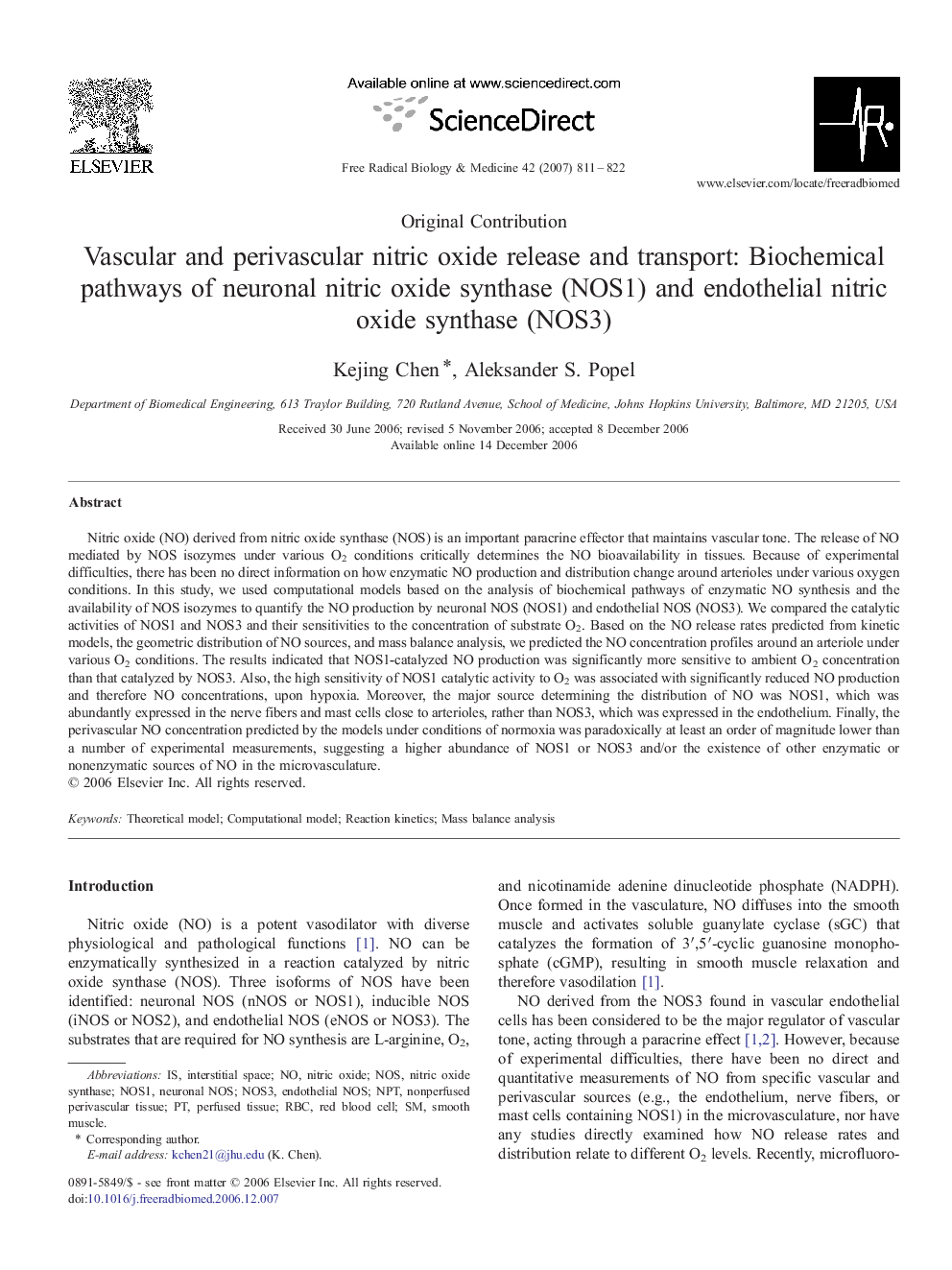| کد مقاله | کد نشریه | سال انتشار | مقاله انگلیسی | نسخه تمام متن |
|---|---|---|---|---|
| 1910612 | 1046779 | 2007 | 12 صفحه PDF | دانلود رایگان |

Nitric oxide (NO) derived from nitric oxide synthase (NOS) is an important paracrine effector that maintains vascular tone. The release of NO mediated by NOS isozymes under various O2 conditions critically determines the NO bioavailability in tissues. Because of experimental difficulties, there has been no direct information on how enzymatic NO production and distribution change around arterioles under various oxygen conditions. In this study, we used computational models based on the analysis of biochemical pathways of enzymatic NO synthesis and the availability of NOS isozymes to quantify the NO production by neuronal NOS (NOS1) and endothelial NOS (NOS3). We compared the catalytic activities of NOS1 and NOS3 and their sensitivities to the concentration of substrate O2. Based on the NO release rates predicted from kinetic models, the geometric distribution of NO sources, and mass balance analysis, we predicted the NO concentration profiles around an arteriole under various O2 conditions. The results indicated that NOS1-catalyzed NO production was significantly more sensitive to ambient O2 concentration than that catalyzed by NOS3. Also, the high sensitivity of NOS1 catalytic activity to O2 was associated with significantly reduced NO production and therefore NO concentrations, upon hypoxia. Moreover, the major source determining the distribution of NO was NOS1, which was abundantly expressed in the nerve fibers and mast cells close to arterioles, rather than NOS3, which was expressed in the endothelium. Finally, the perivascular NO concentration predicted by the models under conditions of normoxia was paradoxically at least an order of magnitude lower than a number of experimental measurements, suggesting a higher abundance of NOS1 or NOS3 and/or the existence of other enzymatic or nonenzymatic sources of NO in the microvasculature.
Journal: Free Radical Biology and Medicine - Volume 42, Issue 6, 15 March 2007, Pages 811–822